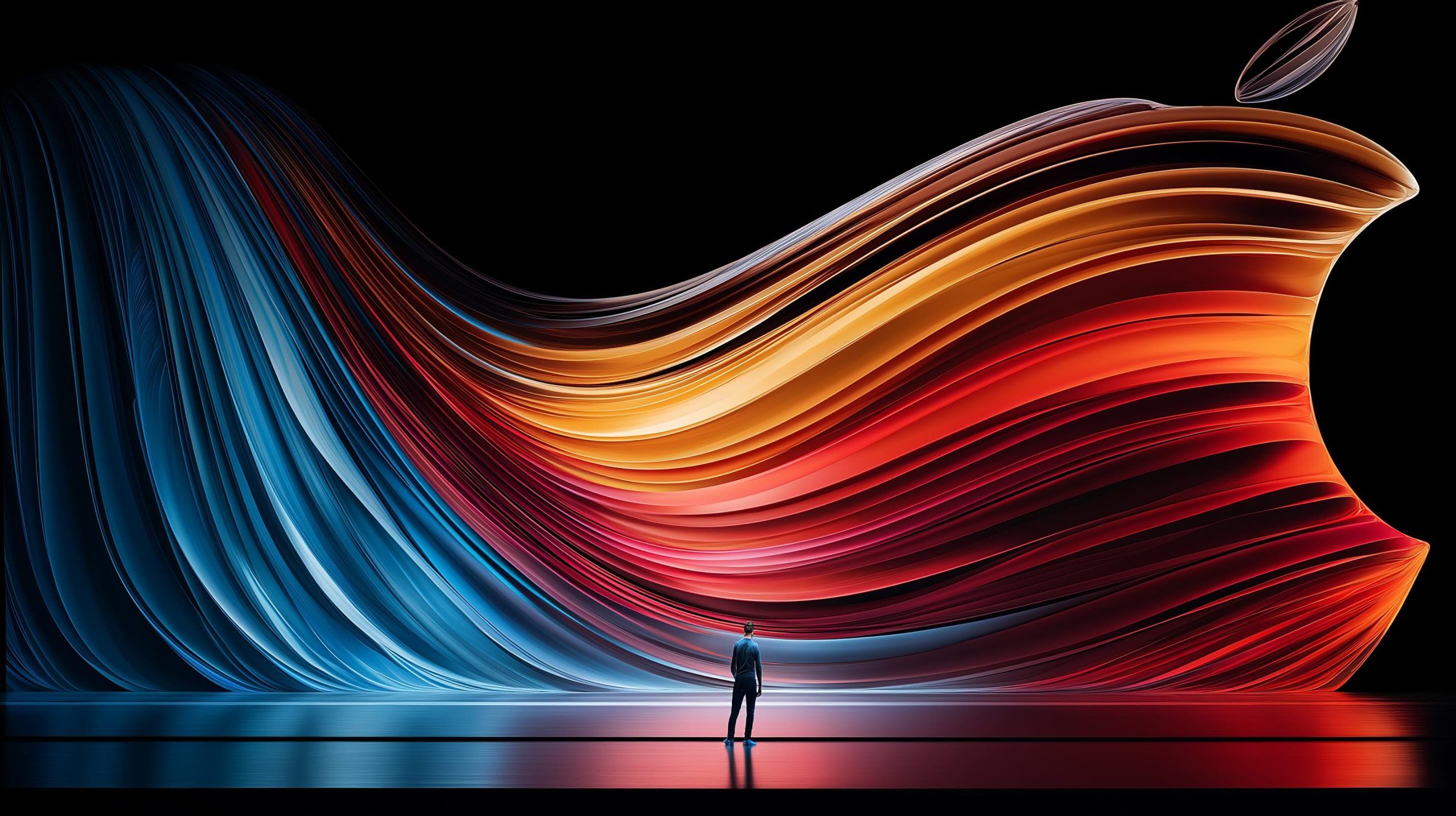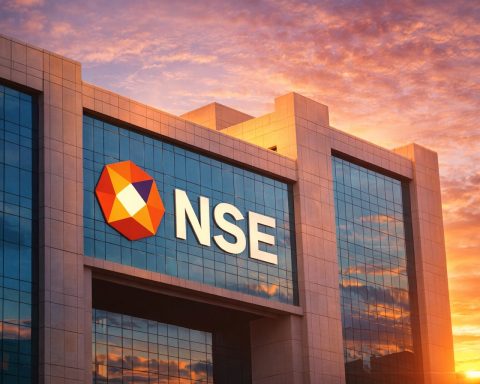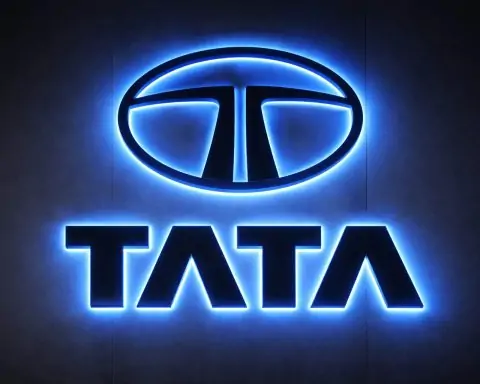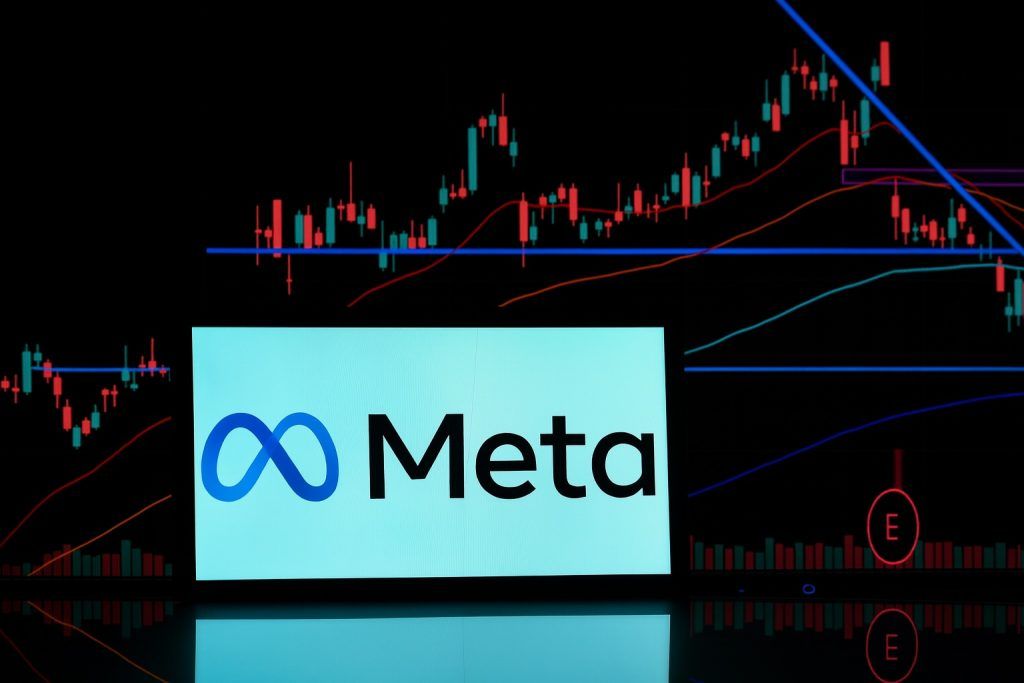- Apple near record highs: AAPL closed around $252 per share on Friday [1], hovering just shy of its all-time peak (~$260) [2]. The stock is roughly flat year-to-date (+≈2% in 2025) after a choppy year [3], underperforming many peer tech giants despite recent gains.
- New products boost AI push: Last week Apple rolled out new devices with its next-gen M5 chip – including a 14″ MacBook Pro, refreshed iPad Pros, and a second-gen Vision Pro AR headset – via press release rather than a big event [4] [5]. Notably, Apple did not raise prices on these upgrades, bucking the inflation trend [6]. The 3nm M5 chip delivers major performance gains for on-device AI tasks [7].
- iPhone 17 “supercycle” buzz: Apple’s iPhone 17 lineup (launched last month) is seeing strong early demand – with sales trending 10–15% above last year’s iPhone 16 launch, according to industry data [8]. Apple kept iPhone 17 prices flat versus last year (Pro model still starting at $1,099 for 256GB) despite higher costs [9], fueling talk of a long-awaited upgrade “supercycle.”
- Leadership shifts underway: Behind the scenes, Apple has been mapping out succession plans. Hardware chief John Ternus (age 50) is widely cited as the “leading contender” to eventually succeed CEO Tim Cook [10]. Longtime COO Jeff Williams will retire by end-2025, handing operations to veteran exec Sabih Khan, as part of “careful succession planning” to ensure continuity [11]. (Cook remains at the helm for now.)
- Wall Street divided: Analysts are split on Apple’s outlook. Bulls like Wedbush’s Dan Ives see a potential “golden era” ahead – Ives just raised his AAPL price target to $310, citing booming iPhone 17 demand [12]. But skeptics are cautious: Jefferies downgraded Apple to Underperform (target ~$205), arguing the stock already reflects “excessive expectations” for next-gen devices [13]. The consensus 12-month price target sits in the mid-$250s [14], implying only modest upside from current levels.
- Earnings and risks ahead: Apple reports earnings late October, with Wall Street forecasting about $101.3 billion in revenue and $1.74 EPS for the quarter [15]. In the previous quarter Apple beat expectations ($94.0 B revenue, +10% YoY) and even raised its outlook [16]. Key macro factors – from U.S.–China trade tensions (new tariff threats) [17] to interest rate policy – remain wildcards for Apple’s richly valued stock. Any signs of easing inflation or Fed rate cuts could lift sentiment [18], while geopolitical or supply chain setbacks could pose risks.
Stock Performance: Near Highs After a Volatile Stretch
Apple’s stock enters the week trading near record levels after navigating a volatile stretch. Shares closed around $252 on Friday (Oct. 17) [19], only a few dollars below Apple’s all-time intraday high (~$260 reached in late September) [20]. This puts AAPL roughly flat year-to-date – up just 1–2% in 2025 [21] – after earlier ups and downs. By comparison, other Big Tech peers have surged (for instance, Nvidia +35% YTD, Microsoft +23%, Alphabet +29% [22]), as investors flocked to high-growth “AI winner” stocks. Apple’s modest rise reflects its already lofty valuation and the rotation toward buzzy AI plays this year [23].
Even so, Apple’s sheer scale (market cap around $3.8 trillion) and steady cash flows make it a staple in many portfolios [24]. The stock has shown resilience during market turmoil. Case in point: during a tech selloff on Oct. 14 triggered by new U.S.–China tariff threats, Apple’s shares dipped early but proved “surprisingly resilient amid the crossfire,” as one market watcher noted [25]. AAPL recovered to close flat that day (~$248) even as more volatile peers fell sharply [26]. Holding above key moving averages, the stock’s recent strength signals positive momentum going into this week [27].
New Products Fuel Optimism – M5 Chip and iPhone 17 Demand
Apple’s latest product cycle is giving investors fresh reasons for optimism. On October 15, the company surprised the market by unveiling several new devices powered by its M5 chip – all via low-key press releases instead of a flashy event. The rollout included a revamped 14-inch MacBook Pro, updated 11″ and 13″ iPad Pro models, and a second-generation Vision Pro 2 mixed-reality headset [28]. Notably, Apple kept prices unchanged on these upgrades (e.g. the base M5 MacBook Pro still starts at $1,599, iPad Pro at $999, Vision Pro 2 at $3,499) [29], despite higher component costs. This price restraint, unusual in an inflationary environment, suggests Apple is balancing margin vs. market share as it pushes new tech.
At the heart of these products is Apple’s in-house M5 silicon built on a cutting-edge 3nm process. The M5 chip delivers significant performance boosts, especially for artificial intelligence tasks. Apple claims the M5 offers 4× the AI processing capability of the previous M4 generation and roughly 15% faster CPU speeds [30]. In practical terms, this means the new MacBook can run advanced AI models on-device (for things like image processing or AI-driven apps) more efficiently [31] – a selling point as tech companies race to showcase AI prowess. The news gave Apple’s stock a small lift mid-week, though gains were tempered by some profit-taking in the broader tech rally [32].
Meanwhile, Apple’s flagship iPhone 17 launch (in September) continues to be a focal point for investors. The iPhone 17 lineup – which includes the standard and Pro models and a new mid-tier “iPhone 17 Air” – has driven a buzz about a potential upgrade “supercycle.” Early sales data are encouraging: iPhone 17 unit sales are trending about 10–15% higher than last year’s iPhone 16 launch period [33]. Robust demand for the high-end 17 Pro and Pro Max models has led to multi-week shipping backlogs in some markets (though generally stable lead times, indicating Apple is managing supply well) [34]. Apple also held launch prices steady year-over-year – for example, the iPhone 17 Pro starts at $1,099 (256GB), identical to the 16 Pro’s launch price [35] – effectively delivering more value (like higher base storage) at the same cost. “This new device will bring a sense of newness to the iPhone, which has remained the same for too long,” observed Paolo Pescatore, a tech analyst, regarding the iPhone 17’s upgrades [36]. Strong iPhone momentum, if sustained, bodes well for Apple’s upcoming holiday quarter and validates management’s strategy of focusing on compelling features rather than raising prices.
Apple is also refining its augmented reality (AR) and wearable lineup. The new Vision Pro 2 headset looks similar to the first-gen model but packs the M5 chip for better performance and has improvements in display and comfort. Notably, Apple has reportedly shelved plans for a cheaper “Vision Air” headset – a rumoured lower-end AR device – and is instead redirecting efforts toward AR smart glasses in coming years [37]. This pivot suggests Apple remains committed to AR, but is pacing its bets, focusing on the high-end Vision Pro for now while exploring glasses that could one day broaden the AR market. Investors see these product moves – from iPhones to M5 Macs to AR devices – as reinforcing Apple’s ecosystem and growth prospects going into 2026.
Leadership Changes: Succession Planning in Progress
Even as Apple rolls out new gadgets, the company is quietly preparing for the future at the top. CEO Tim Cook (64) shows no signs of leaving immediately, but succession plans are being set in motion. Apple’s longtime hardware engineering chief John Ternus has emerged as the most likely heir apparent to eventually replace Cook as chief executive [38]. Ternus, 50, has been with Apple since 2001 and rose to Senior VP in 2021, overseeing the development of flagship products (he even took the stage to introduce the “iPhone 17 Air” this year). Insiders note Ternus is the same age Cook was when he became CEO, hinting that Ternus could similarly lead Apple for a decade or more if he gets the nod [39]. Apple’s PR team has visibly put more spotlight on Ternus at recent product events, a move many interpret as grooming him for bigger responsibilities [40].
In a carefully managed succession plan, other veteran executives are shifting roles as well. Longtime Chief Operating Officer Jeff Williams – often seen as Tim Cook’s right-hand man – will retire at the end of 2025】 [41]. Williams has already quietly handed off day-to-day operations oversight to Sabih Khan, a 30-year Apple veteran who is now SVP of Operations [42]. Earlier this year Apple also installed a new Chief Financial Officer, Kevan Pegula (Parekh), replacing retiring CFO Luca Maestri [43]. Apple has emphasized that Cook remains firmly in charge and that these moves are part of “careful succession planning” to maintain stability at the $3+ trillion company [44]. By refreshing the top ranks gradually, Apple aims to ensure continuity in its culture and strategy – so that whenever Cook does eventually step back, the transition will be smooth and shareholder confidence steady.
These leadership changes come as Apple navigates a pivotal time, investing in new product categories (like AR/VR and automotive initiatives) and expanding services. A new CEO in the next few years will have big shoes to fill, but observers say Apple’s bench is deep. For now, the orderly succession developments are viewed as a positive sign of long-term planning. “Apple is doing what’s needed to avoid any abrupt vacuum when Cook leaves – it’s textbook succession management,” one business professor told a news outlet, noting that Wall Street generally dislikes surprise CEO departures. As this plan unfolds, investors seem comforted that Apple’s future leadership path is more defined than at many tech peers.
Wall Street Sentiment: Bulls vs. Bears on AAPL
Wall Street analysts remain divided on how much upside is left in Apple’s stock, which trades near record highs at a premium valuation. On the bullish side, some see Apple entering a new “super cycle” of growth driven by its latest products and expansion into new markets like AR and AI. Noted tech analyst Dan Ives of Wedbush Securities, for instance, recently called this a potential “golden era” for Apple [45]. Pointing to stronger-than-expected iPhone 17 sales and momentum in wearables and services, Ives upped his 12-month price target to $310 – one of the most bullish targets on the Street – and argued that Apple’s massive base of older iPhones sets the stage for a prolonged upgrade cycle [46] [47]. He believes new offerings like the Vision Pro headset further cement users in Apple’s ecosystem, supporting continued revenue growth [48]. Similarly, Bank of America analysts maintained their Buy rating (price target $270) on AAPL, citing Apple’s “strong capital returns” and calling it an “eventual winner on AI at the edge,” with valuable upside optionality from new products and markets [49]. In other words, bulls argue Apple’s foray into on-device AI, custom silicon, and AR will pay off, on top of its hefty share buybacks and dividends which reward investors.
However, the bearish or cautious camp contends that much of Apple’s good news is already priced in. Investment bank Jefferies made waves recently by downgrading Apple to a rare Underperform, warning that the stock’s valuation has baked in “excessive expectations” for upcoming devices and innovations [50]. With Apple’s market capitalization above $3 trillion, they see an unfavorable risk/reward unless Apple delivers a truly game-changing new hit product [51]. Some valuation-minded analysts point out that at around 38× earnings, Apple’s price-to-earnings ratio is well above its historical norm – one analyst noted that upside is likely “modest” from here “unless new catalysts emerge.” [52] Even some bulls concede the stock isn’t cheap. The average 12-month price target for AAPL hovers in the mid-$250s [53] (roughly in line with the current price), reflecting a consensus of “moderate buy” and expectations of steady, not explosive, growth ahead [54]. In short, Apple’s valuation premium assumes continued strong execution. Any hint of slowing iPhone sales or a flop in a new category could spur a reassessment. For now, Apple’s ability to deliver consistent results and incremental innovation has earned it the benefit of the doubt: as long as the iPhone 17 sells briskly and new M5 Macs and Vision Pro find their niche, many analysts expect the stock to hold its ground or gradually push to new highs [55]. But if Apple stumbles or demand cools, the bears warn, the stock could quickly reset from these lofty levels [56].
Looking Ahead: Earnings on Deck and External Wildcards
The coming weeks will be crucial in determining Apple’s next chapter. Apple’s fiscal Q4 earnings report is expected in late October (around Oct. 30, 2025) and will show whether the optimistic trends are translating into financial results. Wall Street is anticipating around $101 billion in revenue and $1.74 in earnings per share for the quarter [57], according to consensus estimates – which would mark solid growth from the year-ago period. In the previous quarter (fiscal Q3, reported in July), Apple handily beat expectations with $94.0 billion in revenue (up 10% YoY) and EPS of $1.57 (versus $1.43 expected) [58], and management issued an upbeat outlook for the holiday quarter. Investors are eager to see if Apple meets or exceeds its current targets; a strong report could validate the bulls’ case that Apple’s product refreshes are driving reaccelerating growth. Apple’s guidance and commentary will be just as closely watched – any hints about iPhone 17 demand, supply chain constraints, or the performance of new segments (like Vision Pro pre-orders or services momentum) could sway the stock’s direction.
Beyond earnings, a few macro factors and wildcards could influence Apple as we head into year-end. Trade tensions remain a concern: the U.S. and China have exchanged tariff threats recently, which underscores Apple’s heavy reliance on China for manufacturing [59]. Any escalation – such as new tariffs on iPhones or restrictions on Apple’s products in China – would be a clear downside risk. Conversely, Apple has been diversifying production to India and Vietnam, which could mitigate some China risk over time (a trend to watch in management’s commentary). Monetary policy is another big factor for all tech stocks. With inflation showing signs of cooling, the Federal Reserve has hinted at possible interest rate cuts on the horizon [60]. Lower rates could support high-valuation stocks like Apple by easing pressure on equity valuations. Indeed, the broader Nasdaq got a boost last week partly on hopes that rate hikes are done and cuts could come in 2026 [61]. Any signals of a dovish shift from the Fed or improving macroeconomic data may help Apple’s stock, whereas a surprise uptick in inflation or rates could hurt sentiment.
Lastly, investors will keep an eye on Apple’s strategic moves and product pipeline updates beyond the immediate earnings. This includes progress in artificial intelligence features (Apple may discuss how AI is enhancing products like Siri, or on-device machine learning advancements with the M5 chip), developments in its services business (App Store, subscriptions, etc., which have been a steady growth engine), and any hints at future product categories (such as the long-rumored Apple Car or the aforementioned AR glasses). While those longer-term projects won’t impact the next quarter or two, they shape the narrative of Apple’s continued evolution. For now, with Apple’s stock near record highs and the company at an inflection point of new hardware and leadership transitions, all eyes are on execution. The consensus on Wall Street is that Apple will deliver modest growth and stable margins – enough to keep the stock in a bullish holding pattern [62]. But as always with a beloved stock priced for perfection, the real test will be living up to the hype. Investors should “expect volatility if Apple even slightly disappoints on its upcoming earnings or holiday outlook,” cautions one market analyst, noting the stock’s high bar. In other words, heading into October 20 and beyond, Apple has to prove that the buzz around iPhone 17, M5 Macs, and everything in the pipeline can translate into sustained results – a narrative that will unfold starting with next week’s earnings report.
Sources: Apple stock and market data from recent analyses [63] [64]; product launch details from Apple/Reuters reports [65] [66]; leadership changes from company insiders and media reports [67] [68]; analyst commentary from Wedbush, BofA, Jefferies and others [69] [70]; consensus estimates via Yahoo Finance [71]; prior earnings and guidance from Apple’s Q3 report [72]; macro context from market news [73].
References
1. www.macrotrends.net, 2. ts2.tech, 3. ts2.tech, 4. ts2.tech, 5. ts2.tech, 6. ts2.tech, 7. ts2.tech, 8. ts2.tech, 9. ts2.tech, 10. ts2.tech, 11. ts2.tech, 12. ts2.tech, 13. ts2.tech, 14. ts2.tech, 15. finance.yahoo.com, 16. ts2.tech, 17. ts2.tech, 18. ts2.tech, 19. www.macrotrends.net, 20. ts2.tech, 21. ts2.tech, 22. ts2.tech, 23. ts2.tech, 24. ts2.tech, 25. ts2.tech, 26. ts2.tech, 27. ts2.tech, 28. ts2.tech, 29. ts2.tech, 30. ts2.tech, 31. ts2.tech, 32. ts2.tech, 33. ts2.tech, 34. www.insidermonkey.com, 35. ts2.tech, 36. ts2.tech, 37. ts2.tech, 38. ts2.tech, 39. ts2.tech, 40. ts2.tech, 41. ts2.tech, 42. ts2.tech, 43. ts2.tech, 44. ts2.tech, 45. ts2.tech, 46. ts2.tech, 47. ts2.tech, 48. ts2.tech, 49. www.insidermonkey.com, 50. ts2.tech, 51. ts2.tech, 52. ts2.tech, 53. ts2.tech, 54. ts2.tech, 55. ts2.tech, 56. ts2.tech, 57. finance.yahoo.com, 58. ts2.tech, 59. ts2.tech, 60. ts2.tech, 61. ts2.tech, 62. ts2.tech, 63. ts2.tech, 64. ts2.tech, 65. ts2.tech, 66. ts2.tech, 67. ts2.tech, 68. ts2.tech, 69. ts2.tech, 70. www.insidermonkey.com, 71. finance.yahoo.com, 72. ts2.tech, 73. ts2.tech







